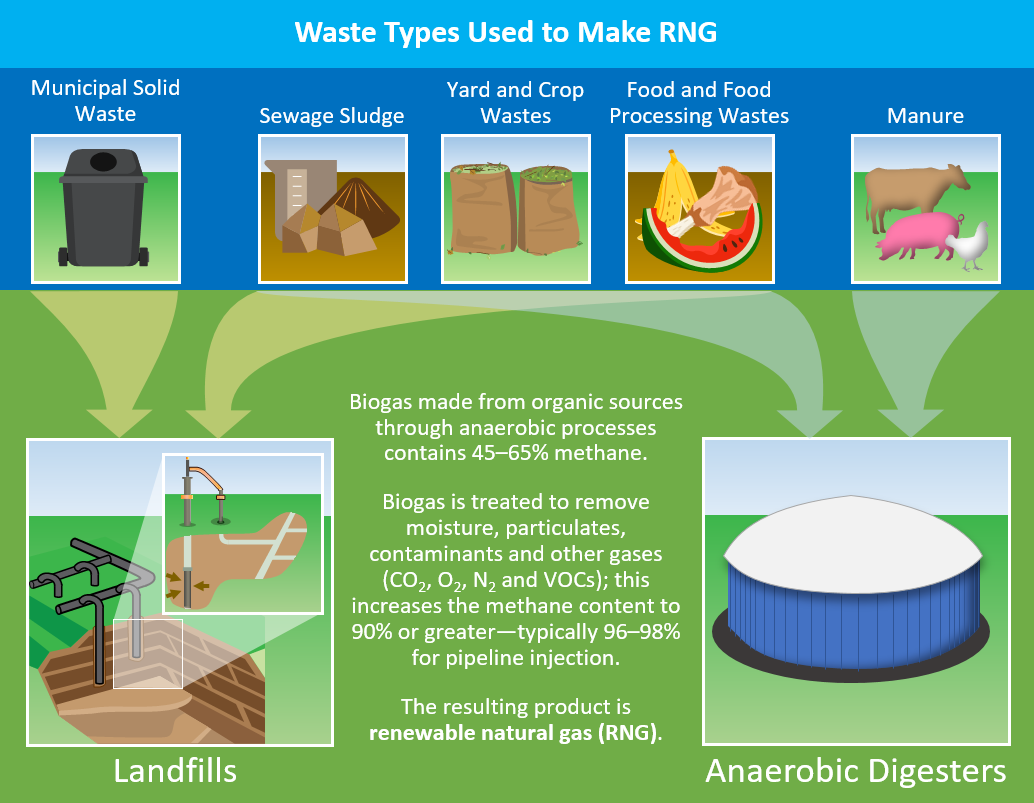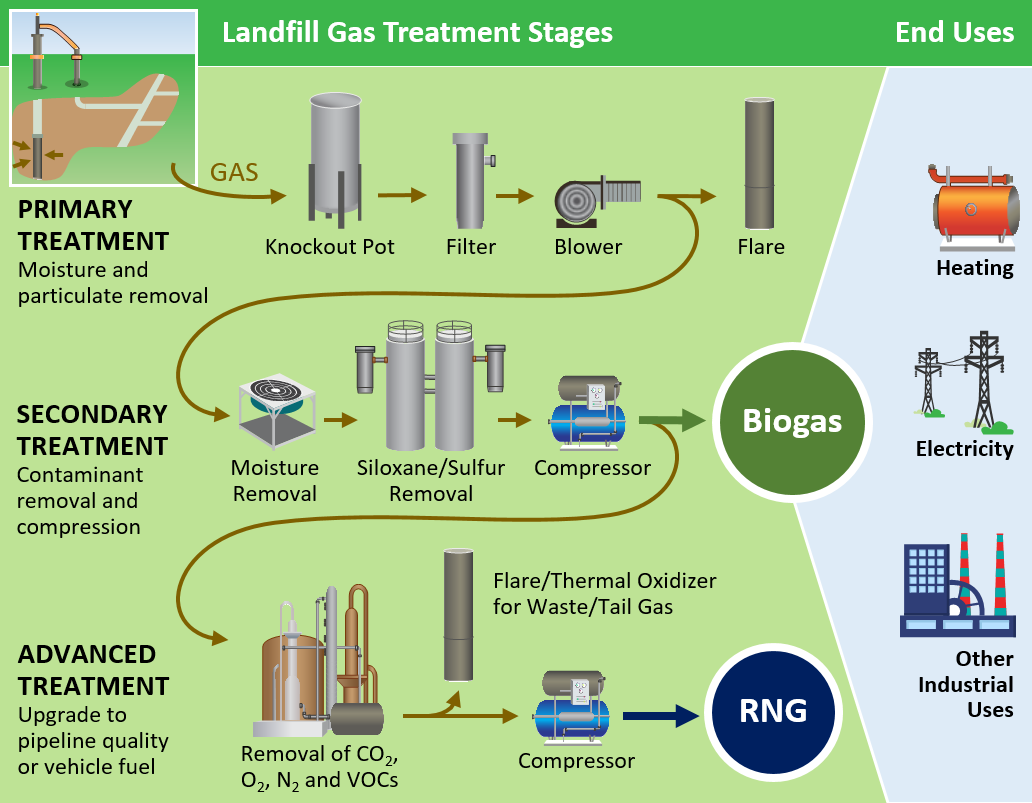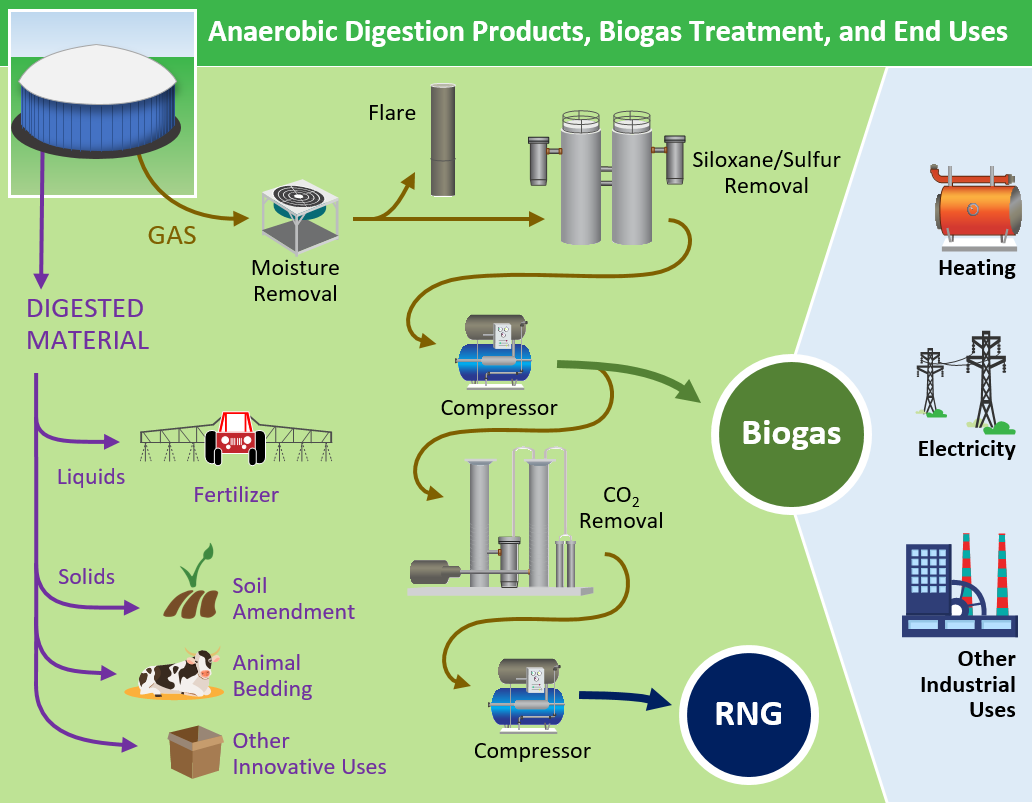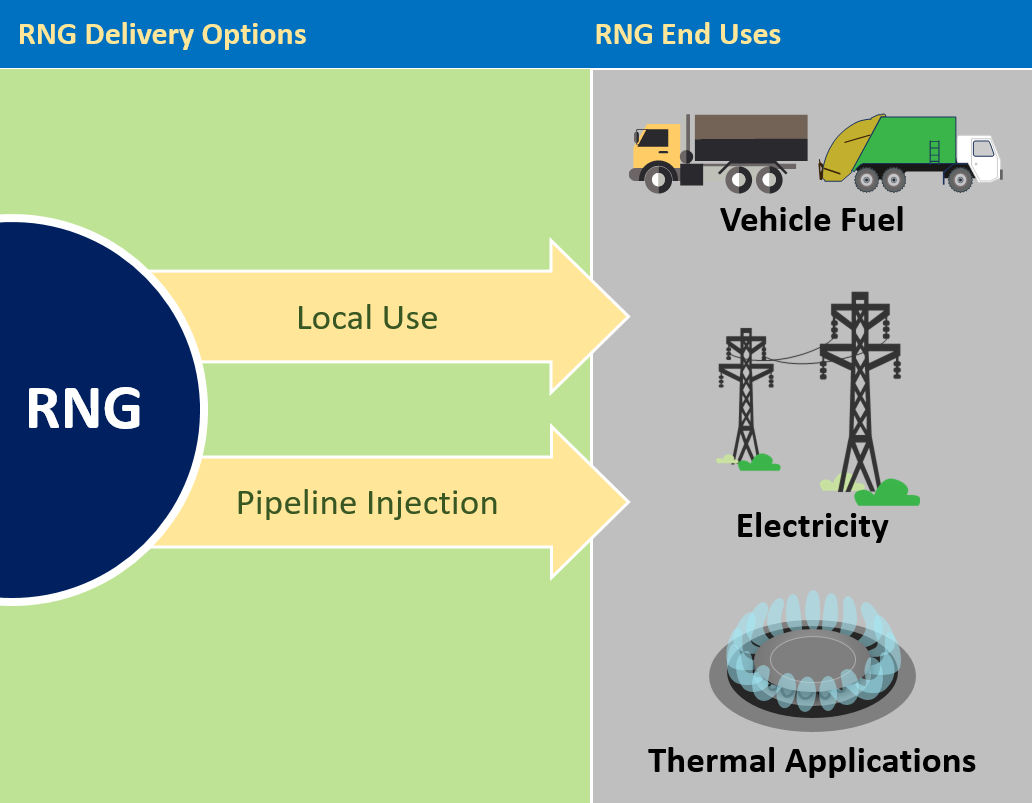Renewable Natural Gas
On this page:
Basic Information about RNG

Renewable natural gas* is a term used to describe biogasGas resulting from the decomposition of organic matter under anaerobic conditions. The principal constituents are methane and carbon dioxide. that has been upgraded for use in place of fossil natural gas. The biogas used to produce RNG comes from a variety of sources, including municipal solid waste landfills and anaerobic digester plants at water resource recovery facilities (wastewater treatment plants), livestock farms, food production facilities and organic waste management operations. RNG can be used locally at the site where the product is created, piped in a dedicated pipeline to an end user or injected into a natural gas transmission or distribution pipeline.
Raw biogas has a methane content between 45 and 65 percent, depending on the feedstock, and must go through a series of steps to be converted into RNG. Treatment includes removing moisture, carbon dioxide and trace level contaminants (including siloxanes, volatile organic compounds and hydrogen sulfide), as well as reducing the nitrogen and oxygen content. Once upgraded, the product gas has a methane content of 90 percent or greater. Typically, RNG injected into a natural gas pipeline has a methane content between 96 and 98 percent.
As a substitute for natural gas, RNG has many potential end uses:
- in thermal applications;
- to generate electricity;
- for vehicle fuel; or
- as a bio-product feedstock.
*RNG is a “term of art” and there is not at present a standard definition. This description has been developed by EPA’s voluntary programs.
Map of Landfill and Agriculture RNG Projects in the United States
This map provides location and other basic information for currently operating RNG projects in the landfill and agriculture (livestock farm) sectors.
Landfill Ag digester
Review detailed data for these projects at:
Growth of Landfill and Agriculture RNG Projects in the United States (2005-2023)
The following chart and accompanying data table provide counts of operating RNG projects by year for the landfill and agriculture (livestock farm) sectors.
| Year | Ag RNG Projects | Landfill RNG Projects |
|---|---|---|
| 2005 | 2 | 11 |
| 2006 | 2 | 13 |
| 2007 | 2 | 17 |
| 2008 | 7 | 20 |
| 2009 | 5 | 27 |
| 2010 | 7 | 30 |
| 2011 | 5 | 32 |
| 2012 | 6 | 33 |
| 2013 | 6 | 38 |
| 2014 | 5 | 39 |
| 2015 | 6 | 41 |
| 2016 | 5 | 41 |
| 2017 | 7 | 45 |
| 2018 | 14 | 58 |
| 2019 | 29 | 63 |
| 2020 | 53 | 70 |
| 2021 | 97 | 76 |
| 2022 | 109 | 84 |
| 2023 | 135 | 102 |
Diagrams of RNG Sources, Gas Treatment and End Uses
The following diagrams provide a visual representation of the RNG production process, from feedstocks to treatment to ways the RNG can be used.
Click on a thumbnail image to see the full-sized diagram.
Benefits
Use of RNG can provide benefits in terms of fuel security, revenue or energy cost savings, improved local air quality and greenhouse gas emission reductions.
Fuel diversity
Use of RNG increases and diversifies domestic energy production. RNG can be used as a baseload fuel source with high availability rates. It leverages existing infrastructure such as pipelines and heavy-duty vehicles. Biogas feedstocks for RNG are generated continuously from a variety of sources.
Economic impacts
The development of RNG projects can benefit the local economy through the construction of RNG processing and fueling station infrastructure and sale of natural gas-powered vehicles. National, state and local incentives may be available depending on the end use, such as credits for production of RNG used for vehicle fuel. This type of financial incentive can provide an economic driver for project development. Owners of biogas feedstock sources may find that creating their own vehicle fuel (e.g., to fuel waste collection vehicles) leads to cost savings.
Learn more about the EPA Renewable Fuel Standard.
Local air quality improvement
Replacing traditional diesel or gasoline with RNG can significantly reduce emissions of nitrogen oxides and particulate matter, resulting in improved local air quality. In addition, RNG (primarily methane) contains zero to very low levels of constituents such as ethane, propane, butane, pentane or other trace hydrocarbons when compared to fossil natural gas.
GHG emission reductions
RNG projects capture and recover methane generated by a landfill or anaerobic digester facility. Methane has a global warming potential at least 28 times greater than carbon dioxide and a relatively short (12-year) atmospheric life, so reducing these emissions can achieve near-term beneficial impacts in mitigating global climate change. For facilities that are not already required to mitigate such emissions, an RNG project can reduce methane emissions significantly.
Learn more about methane emissions in the United States.
Resources
RNG Technical Resources
-

-

-

Webinars and Presentations Related to RNG
More Information on RNG
The following EPA programs work cooperatively with industry stakeholders to reduce or avoid methane emissions by supporting biogas energy projects including those that produce RNG.
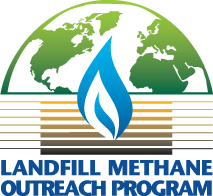
|
LMOP encourages the recovery and beneficial use of biogas generated from organic municipal solid waste. LMOP tracks data for both RNG projects and landfills that could create RNG and provides tools and resources to support RNG project development. |
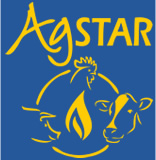
|
AgSTAR promotes the use of anaerobic digestion biogas recovery systems to reduce methane emissions from livestock waste. AgSTAR provides information about RNG from Agricultural-Based AD/Biogas Systems. |
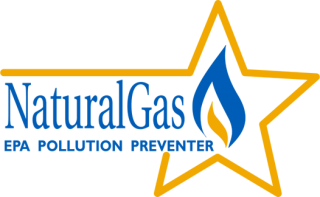
|
Natural Gas STAR provides a framework for technical support, stakeholder engagement, and sharing information about opportunities for reducing methane emissions from the oil and gas industry. |
The Renewable Fuel Standard program was created to expand the use of renewable fuels while reducing reliance on fossil fuels. It provides a market-based monetary value for renewable fuels, including RNG.


